Custom & Bulk Orders Available
Sports Backpack Manufacturer: Your Ultimate Partner in Quality and Durability
Explore Our Comprehensive Range
Diverse Fabrics, Distinctive Styles – Tailored for You
Diverse Fabrics, Distinctive Styles – Tailored for You
Why choose us ?
Manufacturing capacity
Equipped with 10 advanced production lines and more than 100 skilled technicians. This allows us to provide high-efficiency, high-quality products to meet your diverse needs. Our commitment is to provide you and your customers with products you can rely on for years.ly on for years to come!
Tailored
We have a team of over 10 professional designers who can offer personalized OEM and ODM services based on your specific requirements. From design to material selection, our customized solutions can help you bring your ideas to life, improve your brand recognition, and make your products stand out in the market.
Eco-Friendly
From materials to processes, we are committed to promoting environmentally responsible practices and providing our customers sustainable options. We prioritize ecologically-friendly manufacturing processes while maintaining the highest quality standards to offer a product line that you and your customers can be proud of.
Reliable delivery
Our trade and industry-integrated business model offers a simple ordering process and reliable global logistics. This ensures that your order, regardless of size or destination, is delivered quickly and to your requirements and specificat
Our advantage
Flexible MOQs
Whether you’re a startup or an established brand, our flexible MOQs can be adapted to your business needs and support your growth at every stage!
Competitive price
By taking advantage of our integrated industrial and trade operations, we can offer competitive pricing and increase your profit margins without sacrificing quality. customized solutions can help you bring your ideas to life, improve your brand recognition, and make your products stand out in the market.
Global Market Insights
We specialize in crafting bags that align with the latest global trends, ensuring that your product offerings stay relevant and competitive. With our extensive sourcing and sales expertise, we provide strategic insights to keep your product line innovative and responsive to evolving market demands.
24/7 Customer Support
We offer a comprehensive 1-to-1 service, with our dedicated support team on hand to answer any questions you may have and ensure a smooth partnership from initial contact through to post-delivery.
Tailored Backpack Solutions for Your Brand
From design to production, we offer tailored backpack solutions for your brand. Get in touch with us to kickstart your project.
Certified Quality— Customer-Approved
Our commitment to quality is unwavering

Chapter 01
All You Need To Know About Sports Backpacks
Table of Contents
Chapter 02
What Are Sports Backpacks?
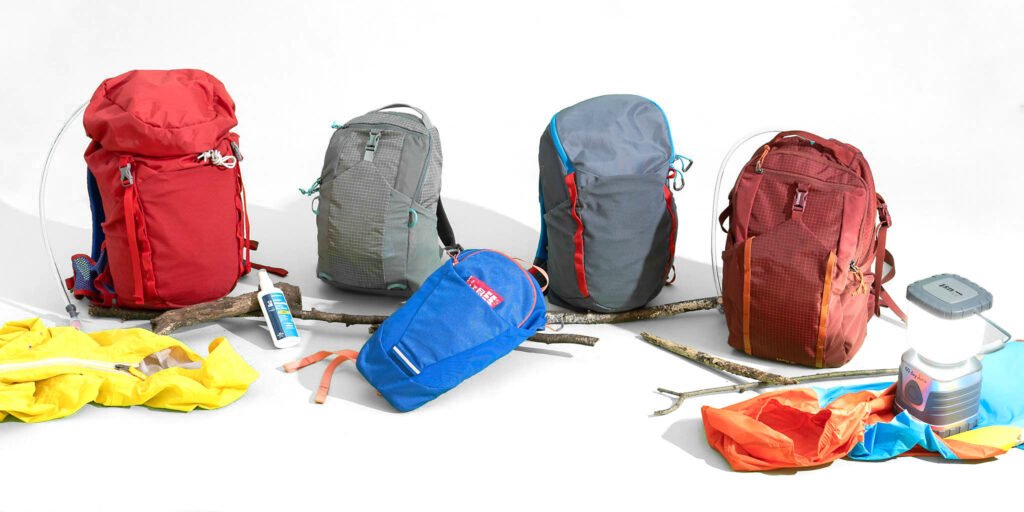
Sports backpacks are specifically designed to meet the needs of athletes, fitness enthusiasts, and outdoor adventurers. They are made from durable materials such as nylon, polyester, or canvas, ensuring they can withstand rigorous use and various weather conditions. These backpacks often feature multiple compartments for organized storage, padded straps for comfort, and water-resistant properties to protect belongings.
There are different types of sports backpacks tailored for specific activities. Gym backpacks are ideal for carrying workout clothes, shoes, and fitness accessories while hiking backpacks offer larger capacities and additional features like hydration systems for long outdoor trips. Team sports backpacks can be customized with logos and colors, making them popular among sports teams for carrying gear and uniforms.
Sports backpacks provide a practical and versatile solution for carrying essential items during sports and outdoor activities. Their specialized designs and durable construction make them an indispensable accessory for anyone leading an active lifestyle.
Chapter 03
What are the different types of sports backpacks available?
Gym Backpacks
Gym backpacks are designed specifically for fitness enthusiasts. They feature multiple compartments to organize workout clothes, shoes, and accessories. Many gym backpacks include dedicated shoe compartments to keep footwear separate from other items and side pockets for water bottles. The materials used are often durable and water-resistant, ensuring the bag can handle the wear and tear of daily gym visits.
Hiking Backpacks
Hiking backpacks are built for outdoor adventures. They offer large capacities to store essentials for long hikes or camping trips, such as food, water, and extra clothing. These backpacks often come with additional features like hydration systems, ergonomic designs, and multiple compartments for better organization. They are made from robust materials that withstand harsh weather conditions and rugged terrain.
Running Backpacks
Running backpacks are lightweight and designed to fit snugly against the body. They typically have minimalistic designs with essential features such as hydration packs, small compartments for keys and snacks, and reflective elements for safety. The focus is on comfort and stability, ensuring the backpack doesn’t bounce while running.
Cycling Backpacks
Cycling backpacks are tailored for cyclists, featuring an aerodynamic shape to reduce drag. They often include hydration systems, reflective elements for visibility, and compartments for carrying tools and personal items. The design prioritizes comfort and functionality, including padded back panels and secure straps.
Team Sports Backpacks
Team sports backpacks are popular among sports teams for carrying gear, uniforms, and personal items. These backpacks can be customized with team logos and colors, making them an excellent choice for team branding. They are typically large and durable, designed to hold significant equipment.
Each type of sports backpack is designed with specific activities in mind, ensuring that athletes and enthusiasts have the right features and durability required for their particular sport. By understanding the different types available, buyers can make informed decisions and select the most suitable backpacks for their needs.
Chapter 04
What Materials Are Used in Making Sports Backpacks, and What Are Their Pros and Cons?

Nylon
Pros:
- Durability: Highly resistant to abrasions, making it suitable for rough use.
- Lightweight: Adds minimal weight to the backpack, making it easier to carry.
- Water-Resistant: Often treated to repel water, protecting contents from moisture.
- Strength: Can handle heavy loads without tearing.
Cons:
- Cost: Generally more expensive than other materials like polyester.
- UV Sensitivity: Prolonged exposure to sunlight can cause fading and degradation over time.

Polyester
Pros:
- Strength: Durable and resistant to stretching and shrinking.
- Water and UV Resistance: Naturally resists water and doesn’t fade easily in the sun.
- Cost-Effective: Typically more affordable than nylon.
- Versatility: Suitable for a wide range of backpacks, from gym bags to travel packs.
Cons:
- Breathability: Less breathable compared to natural fabrics like cotton.
- Weight: Heavier than some materials like nylon, though still relatively lightweight.

Canvas
Pros:
- Durability: Extremely tough and long-lasting.
- Aesthetic: Offers a classic and rugged look.
- Eco-Friendly: Often made from natural fibers, which are biodegradable.
Cons:
- Weight: Heavier than synthetic materials like nylon and polyester.
- Water Resistance: Not naturally water-resistant and may require additional treatment to repel water.

Ripstop Fabric
Pros:
- Tear-Resistant: The unique weave pattern prevents small tears from spreading.
- Lightweight: Provides durability without adding significant weight.
- Strength: Strong and durable, suitable for harsh environments.
Cons:
- Cost: Can be more expensive due to the specialized weaving process.
- Stiffness: May be stiffer than other fabrics, affecting comfort and flexibility.

Mesh
Pros:
- Breathability: Excellent ventilation, reducing sweat buildup and increasing comfort.
- Lightweight: Adds minimal weight to the backpack.
- Flexibility: Can be easily integrated into various parts of the backpack for enhanced airflow.
Cons:
- Durability: Less durable than solid fabrics; prone to tearing and wear.
- Limited Use: Typically used only in specific areas like back panels and pockets, not for the entire backpack.

TPU (Thermoplastic Polyurethane)
Pros:
- Waterproof: Creates a waterproof barrier when coated on other fabrics.
- Abrasion Resistance: Highly resistant to wear and tear.
- Flexibility: Maintains flexibility even in cold temperatures.
Cons:
- Cost: More expensive due to the additional coating process.
- Weight: Adds some weight to the backpack compared to uncoated fabrics.
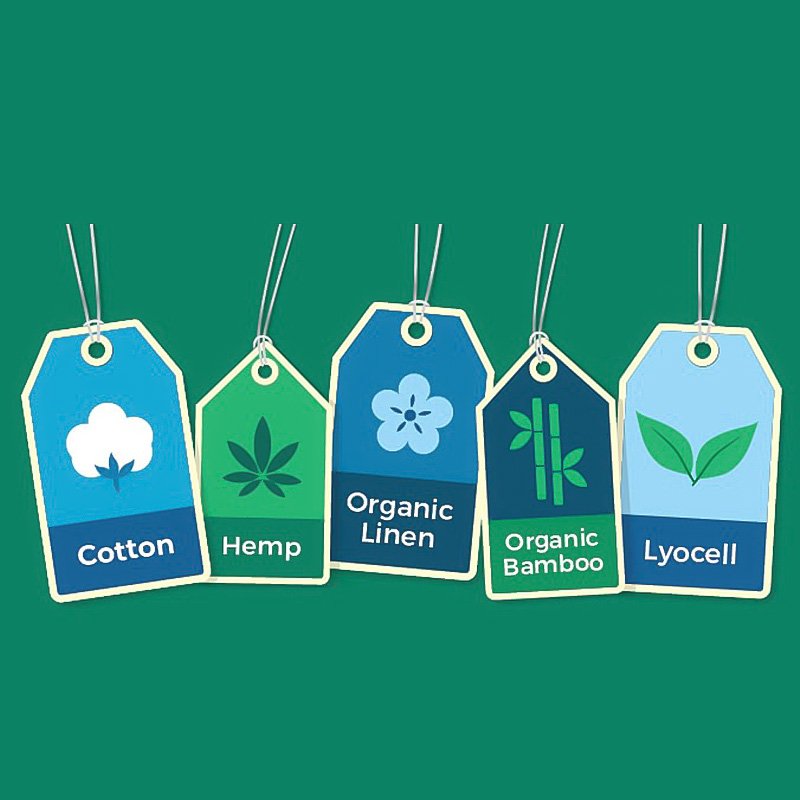
Eco-Friendly Materials
Pros:
- Sustainability: Made from recycled or biodegradable materials, reducing environmental impact.
- Market Appeal: Attractive to environmentally conscious consumers.
- Functionality: Offers comparable durability and performance to traditional materials.
Cons:
- Cost: Can be more expensive due to the use of sustainable production methods.
- Availability: May have fewer options available compared to traditional materials.
Conclusion
When choosing materials for sports backpacks, it’s essential to consider the specific needs and conditions they will be used in. Nylon and polyester offer durability and resistance to the elements, while canvas provides a classic look with rugged durability. Ripstop fabric ensures tear resistance, and mesh enhances breathability. TPU coatings add waterproofing, and eco-friendly materials cater to sustainability-conscious consumers. Understanding the pros and cons of each material will help buyers select the best sports backpack for their requirements, ensuring functionality, comfort, and durability.
Chapter 05
How Backpack Size Is Measured
Understanding how backpack size is measured is essential for selecting the right one to meet your needs. Backpack size is typically measured in terms of volume and dimensions, which are crucial in determining how much the backpack can hold and how it fits your body.
Volume
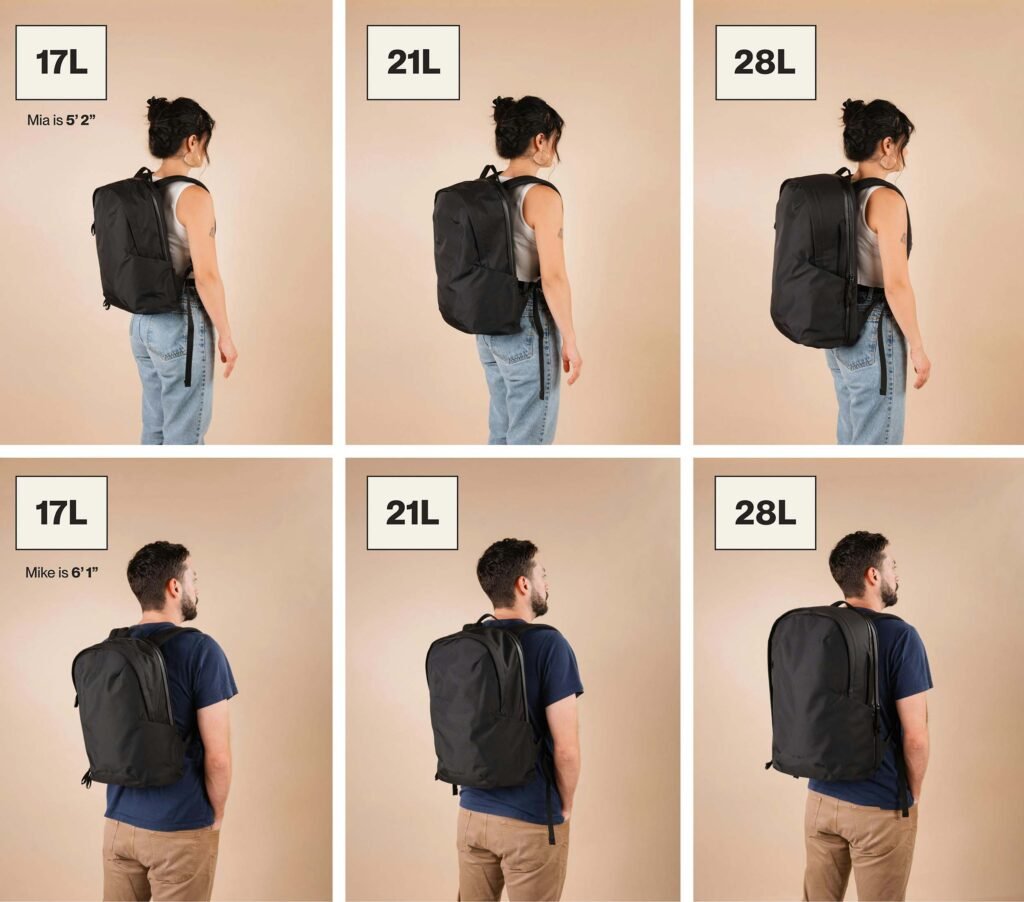
Liters (L) as a Standard Unit
- The most common unit for measuring backpack size is liters. This measurement represents the total capacity of the combined compartments and pockets in the backpack.

How Volume Is Calculated:
- Manufacturers measure the volume of a backpack by filling it with small, flexible balls (typically 20mm plastic balls) and then transferring them to a container with volume markings, following the American Society for Testing and Materials (ASTM) F2153-07 standard. This process ensures an accurate measurement of the internal space available.
- Another method, although less common and more challenging to execute, involves using water instead of plastic balls to determine the volume.
Understanding Volume Ranges:
- Small Backpacks (10-20 liters): Ideal for carrying a few essentials, suitable for short trips, running, or as a lightweight daypack.
- Medium Backpacks (20-30 liters): Great for day hikes, gym use, and daily commuting. They offer enough space for clothes, gear, and additional items.
- Large Backpacks (30-50 liters): Best for overnight trips, multi-day hikes, or activities requiring more gear. They provide ample space for clothing, food, and specialized equipment.
- Extra-Large Backpacks (50+ liters): Used for extended trips or expeditions where carrying a large amount of gear and supplies is necessary.

Accuracy of Volume Measurement:
- Some companies may include the volume of external pockets and compartments that are not fully enclosed (such as water bottle pockets or compression pockets) in their total volume measurements. This practice can give a misleading depiction of a backpack’s actual capacity. Following the ASTM standard, as reputable brands like Knack do, ensures a more accurate and consistent measurement by only including fully enclosed compartments.
Dimensions
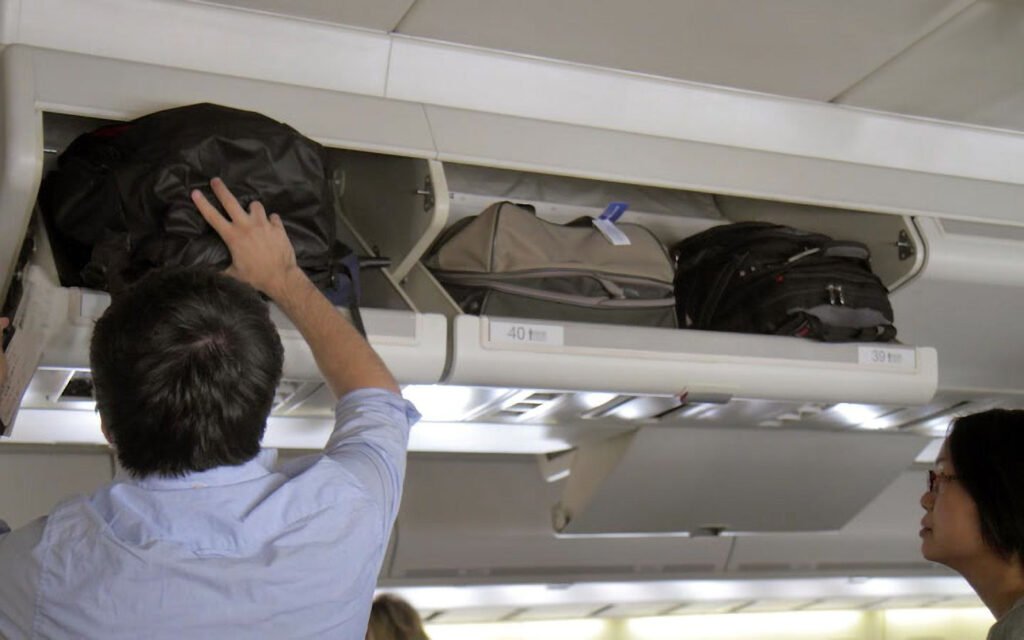
Importance of Dimensions:
- Fit: Ensures the backpack fits your body size and shape comfortably. A properly fitting backpack will distribute weight evenly and reduce strain.
- Functionality: Determines if the backpack will fit in storage spaces such as overhead bins on airplanes or lockers.
- Aesthetics: Helps you choose a backpack that matches your style and preferences.

Height, Width, and Depth:
- Backpack dimensions are usually provided in height (H), width (W), and depth (D). These measurements give you an idea of the external size and shape of the backpack.
- Height: Measured from the base to the top of the backpack.
- Width: Measured from one side of the backpack to the other at the widest point.
- Depth: Measured from the front to the back of the backpack at the deepest point.

Comparing Dimensions:
- When comparing backpacks, consider the volume and dimensions to understand how much space is available and how the backpack will fit on your back and in storage spaces.
Additional Considerations

Torso Length:
- The torso length of a backpack is the distance from the base of the neck to the top of the hip bones. Many backpacks come with adjustable torso lengths to ensure a proper fit. Measure your torso length to find a backpack that matches your size for better comfort and support.

Hip Belt Size:
- The hip belt size is essential for larger backpacks, especially those used for hiking or traveling. The hip belt should fit snugly around your hips to help distribute the backpack’s weight and reduce the load on your shoulders.

Load Lifters and Sternum Straps:
- Load lifters connect the top of the shoulder straps to the top of the backpack, helping to stabilize the load and bring the weight closer to your body.
- Sternum straps connect the shoulder straps across your chest, providing additional stability and preventing the shoulder straps from slipping.
Conclusion
Backpack size is measured primarily by volume in liters and the external dimensions of height, width, and depth. Understanding these measurements helps you select a backpack that meets your capacity needs and fits comfortably on your body. By considering volume, dimensions, torso length, and additional fit features, you can choose the right backpack for your specific activities and preferences. Reputable brands that follow standardized measurement practices provide more accurate and comparable size information, ensuring you make an informed decision.
Chapter 06
How Can I Determine the Right Size and Capacity for a Sports Backpack?
Choosing the right size and capacity for a sports backpack is crucial to ensure it meets your needs without being too bulky or small. Here are some key factors to consider:
Assess Your Specific Needs
Activity Type:
- Gym and Fitness: For gym use, a smaller backpack (10-20 liters) is usually sufficient to carry workout clothes, shoes, a towel, and toiletries. Look for features like separate compartments for shoes and wet clothes and side pockets for water bottles.
- Hiking and Outdoor Adventures: A backpack with a 20-30 liter capacity is ideal for day hikes. Consider a larger pack (30-50 liters) for multi-day hikes or camping to accommodate extra gear, food, and clothing. Key features to look for include hydration system compatibility, multiple compartments for organization, and durable, weather-resistant materials.
- Running and Cycling: Opt for a compact and lightweight backpack (5-15 liters) carrying essentials like water, snacks, and personal items. Look for backpacks with a snug fit, minimalistic design, hydration pack compatibility, and reflective elements for safety.
- Team Sports: A medium to large backpack (30-50 liters) is often needed to carry uniforms, equipment, and personal items for practice or games. Customization options for team logos and colors can also be important.
- Travel: A giant backpack (40-60 liters) with ample storage space and multiple compartments for organization is necessary for traveling athletes or those going on longer trips. Look for padded straps, lockable zippers, and durable construction to withstand the rigors of travel.
Frequency and Duration of Use:
- Daily Use: If you plan to use the backpack daily, choose a size that comfortably fits all your daily essentials without being too cumbersome. Features like padded straps and back panels can enhance comfort for everyday carry.
- Occasional Use: For occasional use, consider the specific activities and choose a size that accommodates the gear required for those activities without adding unnecessary bulk.
Consider the Load
Volume:
- Small Backpacks (5-20 liters): Suitable for carrying essentials like water bottles, snacks, and small personal items. Ideal for short trips, running, and light activities.
- Medium Backpacks (20-35 liters): Great for gym use, day hikes, and everyday activities. Provides enough space for clothing, gear, and additional items.
- Large Backpacks (35-60 liters): Best for longer trips, multi-day hikes, and activities requiring more gear. Offers ample space for clothing, food, and specialized equipment.
- Extra-Large Backpacks (60+ liters): Used for extended trips or expeditions where carrying a large amount of gear and supplies is necessary.
Weight:
- Ensure the backpack is light when empty, mainly if used for extended periods. Look for lightweight materials that still offer durability and strength.
Fit and Comfort

Torso Length:
- Measure your torso length and choose a backpack that fits well to avoid discomfort and strain. Many backpacks come with adjustable torso lengths for a better fit. The right torso length ensures that the backpack’s weight is distributed correctly along your back, reducing the risk of strain and injury.
Straps and Padding:
- Look for backpacks with padded shoulder straps, hip belts, and back panels. These features help distribute weight evenly and enhance comfort during use. Adjustable straps allow you to customize the fit to your body, ensuring stability and comfort.
Adjustability:
- Ensure the backpack has adjustable straps and belts to customize the fit to your body shape and size. Proper adjustability can significantly improve comfort and stability. Features like load lifters, sternum straps, and compression straps can help fine-tune the fit and stabilize the load.
Additional Features
Compartments and Pockets:
- Consider backpacks with multiple compartments and pockets for better organization. This feature is handy for separating wet and dry items or for quick access to frequently used items. Specialized pockets for laptops, hydration systems, or shoes can add functionality.

Hydration Compatibility:
- Look for backpacks compatible with hydration systems for hiking, running, and cycling. This feature allows you to stay hydrated without stopping and unpacking your water bottle. Hydration compatibility often includes a dedicated sleeve for a hydration bladder and an exit port for the hose.

Accessibility:
- Ensure that the backpack provides easy access to your gear. Features like front-loading compartments, side zippers, and top flaps can make packing and unpacking more convenient. Look for designs that allow you to access essential items quickly without digging through the entire bag.

Weather Resistance:
- Consider the weather conditions in which you will be using the backpack. Water-resistant or waterproof materials and zippers can protect your belongings from rain and moisture. Some backpacks come with integrated rain covers for added protection.

Durability:
- Choose a backpack made from durable materials that can withstand the wear and tear of your activities. Reinforced stitching, heavy-duty zippers, and abrasion-resistant fabrics enhance a backpack’s longevity.

Conclusion
Determining the right size and capacity for a sports backpack involves considering the type of activity, frequency, and duration of use, the volume and weight of the load, and the fit and comfort of the backpack. By assessing your specific needs and preferences, you can select a backpack that offers the perfect balance of space, functionality, and comfort, ensuring you have all the essentials for your sports and outdoor activities without unnecessary bulk.
Chapter 07
What Features Should I Look for in a High-Quality Sports Backpack?
Choosing a high-quality sports backpack involves considering several features that ensure durability, functionality, and comfort. Here are the key features to look for:
Durable Materials

Nylon and Polyester:
Look for backpacks made from high-quality nylon or polyester. These materials are known for their durability, water resistance, and ability to withstand wear and tear. Ripstop fabric is an excellent choice for added strength and tear resistance.
Reinforced Stitching:
Check for reinforced stitching at stress points, such as shoulder straps and handles. This ensures the backpack can handle heavy loads without tearing.
Water-Resistant Coating:
A water-resistant or waterproof coating protects your belongings from rain and moisture, making the backpack suitable for various weather conditions.
Comfortable Design

Padded Shoulder Straps:
Adjustable, padded shoulder straps distribute weight evenly and reduce pressure on your shoulders. Look for breathable mesh padding to enhance comfort.

Padded Back Panel:
A padded back panel with ventilation channels increases comfort and reduces sweating. Look for ergonomic designs that conform to the natural curve of your spine.
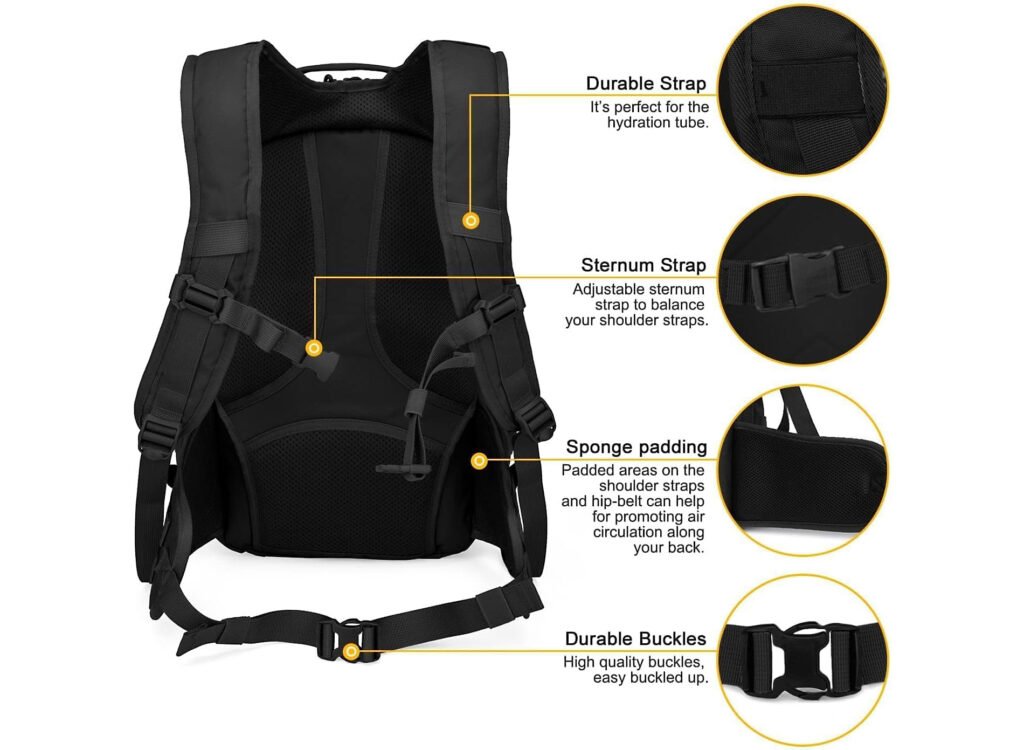
Hip Belt and Sternum Strap:
A padded hip belt helps distribute weight to your hips, reducing the load on your shoulders for larger backpacks. A sternum strap stabilizes the bag and prevents it from shifting during movement.
Adequate Storage and Organization

- Multiple Compartments: Multiple compartments and pockets help you organize your belongings efficiently. Look for separate sections for shoes, wet clothes, and small items.
- Main Compartment: A spacious main compartment is essential for storing more oversized items like clothes, gear, and equipment.
- Side Pockets: Elastic or zippered side pockets are convenient for carrying water bottles, umbrellas, or other quick-access items.
- Front Pocket: A front pocket with organizational panels can store small essentials like keys, pens, and a wallet.
- Internal Pockets: Internal pockets and dividers help keep your belongings organized and prevent them from shifting around.
Hydration Compatibility

- Hydration Sleeve: For activities like hiking, running, or cycling, a hydration-compatible backpack with a dedicated sleeve for a hydration bladder is beneficial. This allows you to stay hydrated without stopping and unpacking your water bottle.
- Hydration Port: A built-in port for the hydration hose makes it easy to access water on the go.
Accessibility and Security

- Easy Access: Features like front-loading compartments, side zippers, and top flaps provide easy access to your gear. Look for designs that allow you to access important items quickly without digging through the entire bag.
- Lockable Zippers: For added security, choose backpacks with lockable zippers to protect your belongings from theft.
Weather Resistance

- Water-Resistant Materials: Look for backpacks made from water-resistant or waterproof materials to protect your belongings from rain and moisture.
- Rain Cover: Some backpacks have an integrated rain cover for additional protection during heavy rain.
Reflective Elements

- Safety Features: Reflective elements on the backpack increase visibility during low-light conditions, enhancing safety for activities like running or cycling.
Customization and Versatility

- Modular Design: Some backpacks offer modular designs with removable compartments or attachments, allowing you to customize the backpack for different activities.
- Compression Straps: Compression straps help stabilize the load and reduce the overall volume of the backpack when it is not fully packed.
Sustainable Options

- If environmental impact is a concern, look for backpacks made from recycled or sustainable materials. Many high-quality brands now offer eco-friendly options without compromising on durability and functionality.
Chapter 08
What Are the Customization Options Available for Sports Backpacks?
Customizing sports backpacks can enhance functionality, promote brand identity, and cater to specific user preferences. Here are the main customization options available for sports backpacks:
Logo and Branding

- Embroidery: Embroidered logos offer a durable and professional look. This method involves stitching the design directly onto the backpack fabric, ensuring it withstands wear and tear.

- Screen Printing: Screen printing is cost-effective for adding logos, slogans, or designs to backpacks. This technique is ideal for large, bold graphics and can accommodate multiple colors.
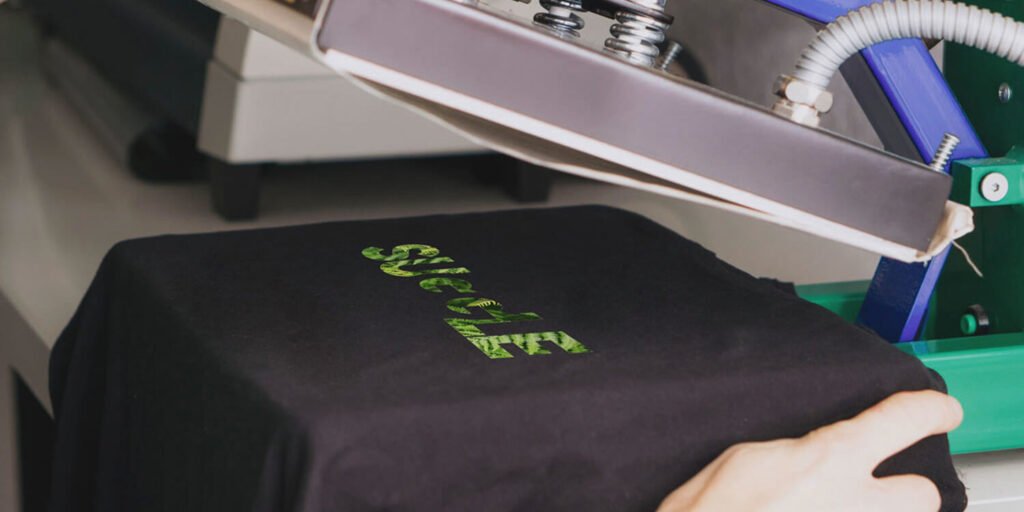
- Heat Transfer: Heat transfer printing uses heat to apply designs onto the backpack. It suits intricate designs and photographs, providing remarkable detail and vibrant colors.

- Patches: Custom patches can be sewn or ironed onto backpacks. They offer a versatile option for adding logos, badges, or other branding elements that can be replaced or removed.
Color and Material Selection

- Custom Colors: Many manufacturers offer a range of colors for both the backpack fabric and trim. This allows for brand-specific color schemes or personal preferences.

- Material Choices: Customization can include selecting from various materials, such as nylon, polyester, canvas, or eco-friendly options. Each material offers different benefits regarding durability, weight, and environmental impact.
Design Modifications

Compartments and Pockets:
Customize compartments and pockets’ number, size, and placement to meet specific needs. For example, adding extra internal dividers, mesh pockets, or specialized compartments for electronics or hydration systems.

Zipper and Closure Options:
Choose different types of zippers, such as waterproof or lockable zippers, and other closure options like buckles, drawstrings, or magnetic snaps for added security and convenience.

Padding and Support:
Customizable padding in the shoulder straps, back panel, and hip belt can enhance comfort. Options include memory foam padding or breathable mesh for added ventilation.
Features and Accessories

Hydration Compatibility:
Include a hydration system with a custom-sized sleeve and hose port. This is particularly useful for hiking, running, and cycling backpacks.

Removable Components:
Add removable components such as waist belts, sternum straps, or internal organizers. These features provide flexibility for different uses and user preferences.
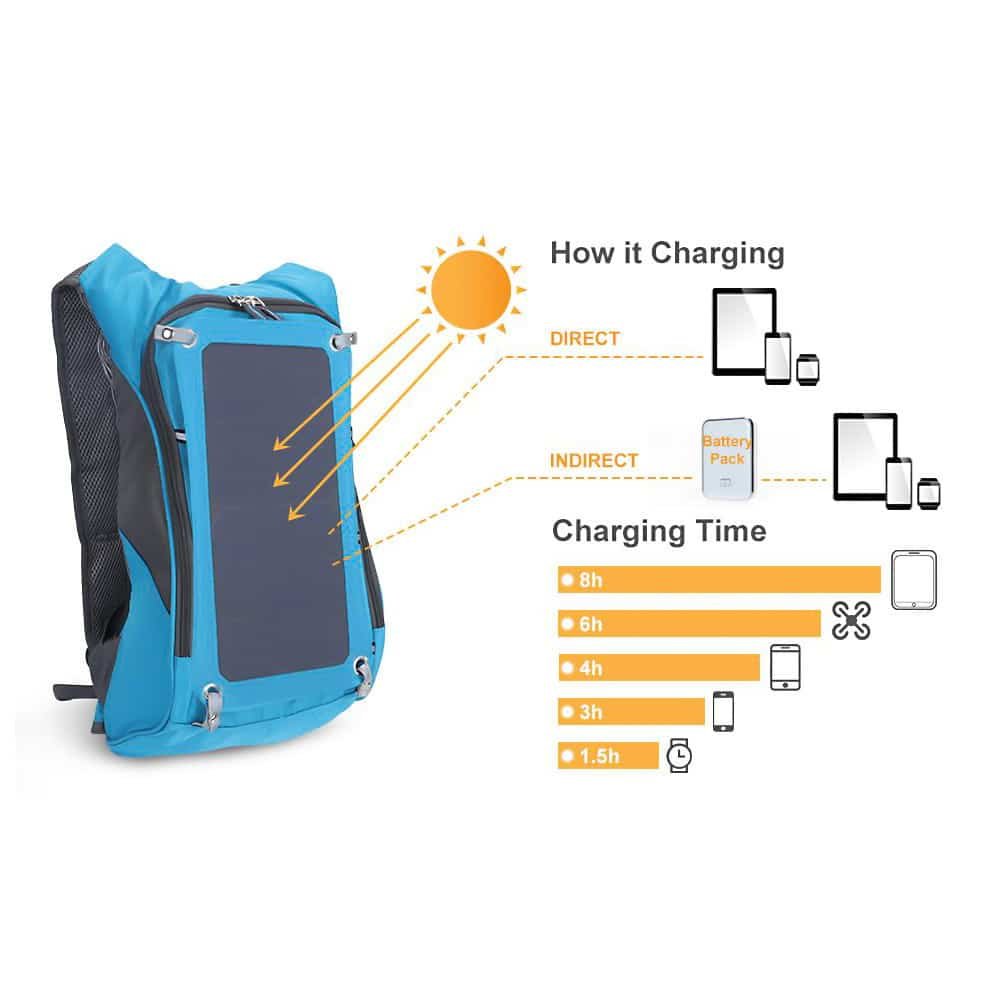
Integrated Technology:
Incorporate features like USB charging ports, solar panels, or LED lights. These high-tech additions cater to modern users who need to stay connected and visible.
Reflective Elements and Safety Features

- Whistles and Safety Buckles: Integrate safety features like whistles on the sternum strap or quick-release buckles. These features can be crucial for outdoor activities and emergency situations.

- Reflective Strips: Add reflective strips or patches to enhance visibility in low-light conditions. This is particularly important for runners, cyclists, and anyone using the backpack in urban environments.
Size and Capacity Adjustments
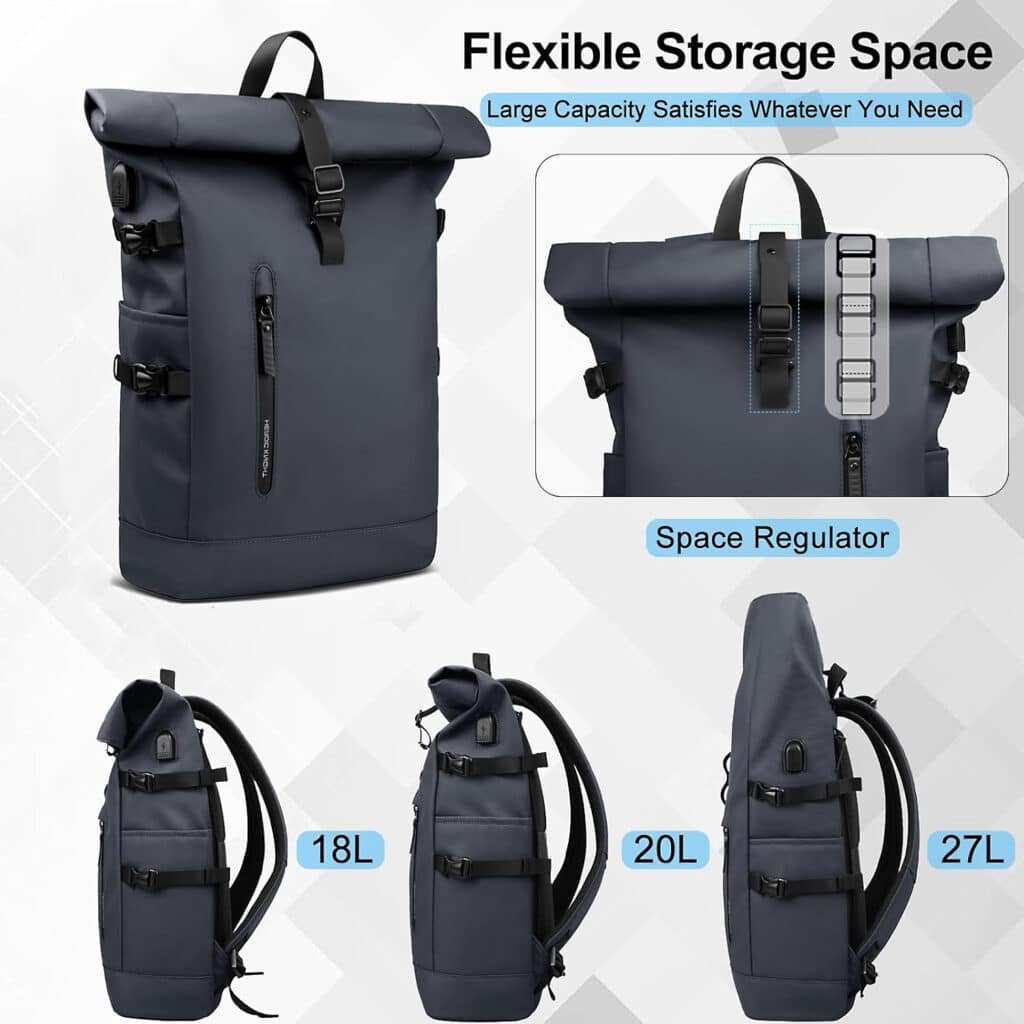
- Expandable Compartments: Incorporate expandable compartments or roll-top closures that increase the backpack’s capacity when needed.
- Compression Straps: Add adjustable compression straps to manage the load and stabilize the contents, making the backpack versatile for various load sizes.
Personalized Touches
Conclusion
Customization options for sports backpacks are extensive, allowing for personalization that meets specific user needs, enhances functionality, and promotes brand identity. From logo and branding options to design modifications, material choices, and additional features, customizing a sports backpack can make it uniquely suited to its intended use. By considering these customization possibilities, users can create a backpack that serves its purpose effectively and stands out with its personalized touches.
Chapter 09
What Should I Consider When Ordering in Bulk to Get the Best Value?
Ordering sports backpacks in bulk can be a cost-effective strategy for retailers,distributors, and organizations. However, to maximize value and ensure a successful bulk purchase, several key factors should be considered:
Supplier Selection

- Reputation and Reliability
Choose suppliers with a proven track record of reliability and quality. Research their reputation through customer reviews, industry ratings, and references from other buyers. - Quality Assurance:
Ensure the supplier has robust quality assurance processes in place. Ask for details about their quality control measures, including inspections, testing, and certifications. - Sample Requests:
Request samples of the backpacks before committing to a bulk order. Evaluating samples allows you to assess the material quality, construction, and finish.
Price and Payment Terms

- Unit Price:
Compare unit prices from multiple suppliers to ensure you are getting competitive rates. Be mindful of the balance between cost and quality. - Discounts and Incentives:
Inquire about bulk discounts, seasonal promotions, or special incentives that can reduce the overall cost. Suppliers often offer tiered pricing, where the unit price decreases with larger orders. - Payment Terms:
Negotiate favorable payment terms, such as extended payment periods or installment plans. Flexible payment terms can improve cash flow and financial management.
Customization Options
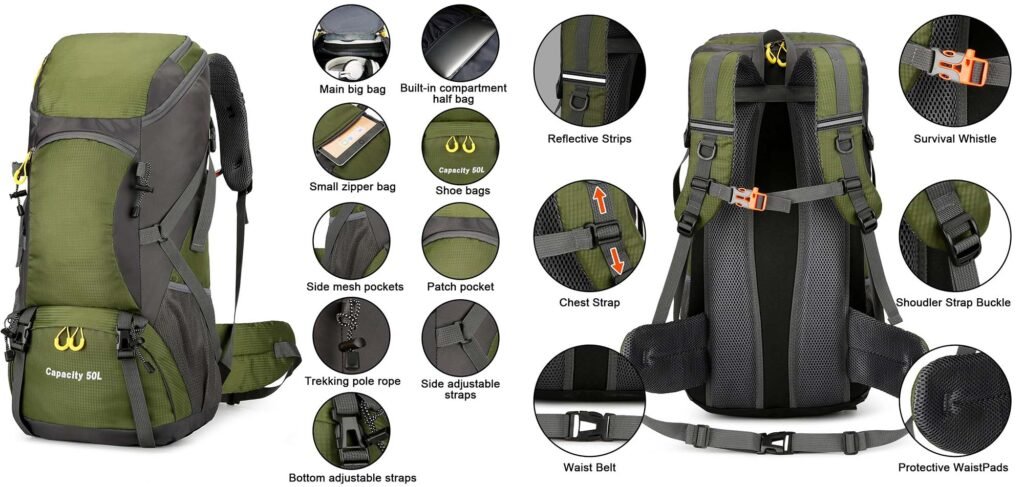
- Branding and Logos:
If customization is necessary, confirm that the supplier can accommodate your branding needs, such as adding logos, colors, and specific design features. - Customization Costs:
Understand the costs associated with customization, including setup fees and additional charges for specific features. Compare these costs across suppliers to find the best deal.
Order Quantity and Minimum Order Requirements

- Minimum Order Quantity (MOQ):
Check the supplier’s minimum order quantity requirements. Ensure that the MOQ aligns with your budget and storage capabilities. - Order Size and Storage:
Consider your storage space and logistics capabilities. Ensure you have adequate storage facilities for bulk orders and a plan for efficient inventory management.
Lead Time and Delivery

- Production and Shipping Lead Time:
Understand the production and shipping lead times to ensure timely delivery. This factor can lead to delays, especially if the backpacks are needed for a specific event or season.
Shipping Costs and - Methods:
Compare shipping costs and methods. Consider options such as sea freight for cost savings or air freight for faster delivery. Ensure that shipping costs are factored into the overall budget. - Delivery Terms:
Clarify delivery terms, such as FOB (Free on Board) or CIF (Cost, Insurance, and Freight). These terms determine who is responsible for shipping costs and risks during transit.
Quality Control and Warranty

- Inspection Services:
Arrange for third-party inspections if necessary. Inspections can verify product quality and adherence to specifications before shipment. - Warranty and Returns Policy:
Understand the supplier’s warranty and returns policy. Ensure there is a straightforward process for addressing defects or issues after delivery.
Long-Term Supplier Relationships

- Partnership Potential:
Consider the potential for establishing a long-term partnership with the supplier. Building a solid relationship can lead to better pricing, priority service, and collaborative opportunities. - Communication and Support:
Evaluate the supplier’s communication and customer support. Effective communication is crucial for managing bulk orders, resolving issues, and ensuring smooth transactions.
Environmental and Ethical Considerations

- Sustainability Practices:
If environmental sustainability is a priority, choose suppliers who use eco-friendly materials and practices. Verify their sustainability claims through certifications and standards. - Ethical Manufacturing:
Ensure the supplier adheres to ethical manufacturing practices, including fair labor standards and safe working conditions. Ethical considerations can enhance your brand’s reputation and appeal.
Conclusion
When ordering sports backpacks in bulk, consider factors such as supplier reputation, price and payment terms, customization options, order quantity, lead time and delivery, quality control, long-term supplier relationships, and environmental and ethical considerations. By thoroughly evaluating these aspects, you can secure the best value for your bulk purchase, ensuring high-quality products, cost savings, and a successful procurement process.
Tell Us What You Need — We’ll Take Care of the Rest!
Let us know your specific requirements, and our team will get back to you with a tailored solution. We look forward to working with you!




